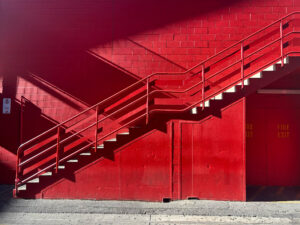Leica M Lenses
When I bought my first Leica M, a Typ240, I bought a 28mm Elmarit and 50mm Summarit. I quickly expanded to a 35mm and decided to buy the more expensive 35mm Summicron. Today, I sport a 21mm Super Elmar, 35mm and 50mm Summilux. If you are getting into Leica, a collection of Summicrons is a great place to start. they are light, easy and forgiving to focus and not too expensive. Or a Summilux. I recommend a 35mm as the range is more versatile than a 50mm.
Leica has once again captured the essence of its rich history by unveiling an updated version of its legendary Leica Summilux-M 50mm F1.4 lens. As the latest addition to the Leica Classic Line, this lens pays homage to its 65-year legacy while incorporating modern refinements for today’s Leica M camera...
How Leica Lenses are Made
This video sums up why Leica lenses are so expensive. You can’t put a price on their craftsmanship.
I don't recommend getting a 50mm lens as a first Leica lens
Coming from DSLRs I think it is very tempting to get a 50mm as it is the prime lens size most DSLR users get. So we tend to be used to it and think it is what we want. But what new Leica lens buyers forget is that you can’t zoom in or out on the prime Leica lenses. So with a 50mm you prevent yourself from having a wider filed of view. That can be easily fixed by getting say a 28mm as well. But, I think when learning a new camera system, get one lens, see how it al works and expand from there. Hence I recommend the 35mm focal length. It does everything you need. 35mm is ideal for street photography, urban landscapes, close up or far away subjects. There is so much you can do with the frame. You can have the close, shallow depth of field look of a 50mm, but have more in the frame.
Voigtlander unveils the Color-Skopar 35mm f/3.5 VM lens for Leica M-mount—a compact, lightweight, and precision-engineered wide-angle lens. The highly anticipated Voigtlander Color-Skopar 35mm f/3.5 Aspherical VM lens is now officially unveiled, bringing a compact, lightweight, and high-precision design to Leica M-mount users. Personally, I try to only use Leica lenses...
Owning a Leica camera is a joy, and maintaining its pristine quality is an essential part of that experience. Properly cleaning your Leica lenses not only ensures sharp, vibrant images but also extends the life of your equipment. Here’s a guide on how to safely clean your Leica lenses, including...
The Leica Summaron 28mm f5.6 is a lens that bridges decades, offering the optical precision Leica is known for alongside a character that feels straight out of the 1950s. It’s not just another lens; it’s a work of art, a homage to a bygone era where craftsmanship and simplicity reigned...
Since 1954, Leica’s M series has epitomised an intersection of craftsmanship and quality, becoming iconic among photographers for its timeless appeal and mechanical precision. Leica’s latest release, the Leica M Edition 70th Anniversary Camera, celebrates 70 years of this storied lineage, delivering a platinum-coated, limited-edition masterpiece for photographers and collectors...
If you’ve ever seen professional photographers at a sports event or wildlife shoot, you may have noticed that some of their large zoom lenses are white. This design choice stands out against the typical black lenses used by most photographers. But why are these lenses white? The answer lies in...
What is the point of this lens? Voigtlander has unveiled its latest addition to the renowned Color-Skopar line, the COLOR-SKOPAR 50mm f/2.2 VM lens, designed for Leica M-mount cameras. This announcement has stirred the photography community, particularly among fans of the ultra-compact 28mm and 35mm Color-Skopar lenses. However, the new...





































































